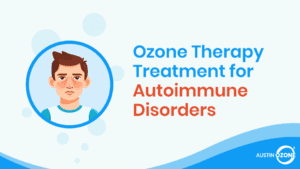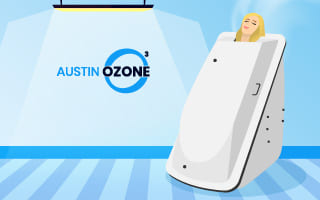
Ozone Therapy for Autoimmune Disorders
Our immune system is biologically set to guard us against foreign cells and germs such as viruses and bacteria.


If ozone was not safe, we would not be able to go outside and breathe the air, especially during sunshine, a thunderstorm, lightning, or after the rain. The fact is, when used responsibly, ozone is very safe just like oxygen and very beneficial to our planet and all of us that live here. To prove this obvious fact, many scientific studies have been done by experts on ozone, and all confirm the safety and beneficial aspects of ozone over and over again.
“Recent authoritative investigations have established, that pure Ozone is Nontoxic even in concentrations as great as 20 or 50 parts per milliliters of air.”
– Clark Thorp, Ph.D., MD
“Pure Ozone is not poisonous in any sense of the word as is breaks down in contact with the mucous membrane, and only Oxygen remains.”
– A. Hill, MD
“Ozone is absolutely harmless when used correctly. We have demonstrated this over a period of many years in patients of all ages.”
– F. B. Carpenter, MD
Air Purification, Water Purification, Deodorization, and Food Sanitation
Ozone type air purifiers have been used safely for years in homes as well as by professional restoration companies to remove fire and flood odors. They are also found in some major hotel chains, they use them to convert smoking rooms to nonsmoking rooms. Ozone type air purifiers are rapidly becoming the popular choice for indoor air purification. These advanced type air purifiers are great for use in your home, office, basement or any other area you wish to purify and/or sanitize not just the air, but also surfaces throughout indoor environments.
Data from IOA
ppm = Parts per million volume air concentration
0.001 ppm
Lowest value detectable by hypersensitive humans. Too low to measure accurately with elaborate electronic equipment.
0.003 ppm
0.003 ppm to 0.010 ppm
The threshold of odor perception by the average person in clean air. Readily detectable by most normal persons. These concentrations can be measured with fair accuracy. Ozone levels measured in typical residences and offices equipped with a properly operating electronic air cleaner when outdoor ozone level is low. Infiltrating outdoor ozone could cause higher indoor concentrations.
0.020 ppm
0.001 to 0.125 ppm
0.020 to 0.040 ppm
0.040 ppm
0.050 ppm
0.050 ppm
0.100 ppm
0.100 ppm
0.100 ppm
0.15 to 0.51 ppm
0.200 ppm
0.300 ppm
0.500 ppm
1.00 to 2.00 ppm
1.40 to 5.60 ppm
5.00 to 25.00 ppm
25.00 ppm and up


Our immune system is biologically set to guard us against foreign cells and germs such as viruses and bacteria.
| Monday - Friday | 8:00am - 5:00pm |
| Saturday | 9:00am - 5:00pm |
| Sunday | 9:00am - 5:00pm |